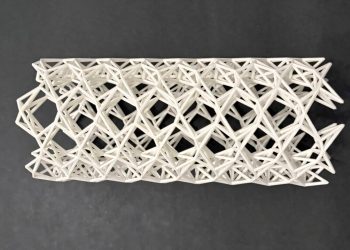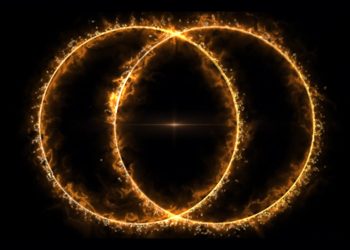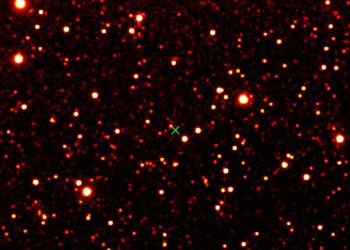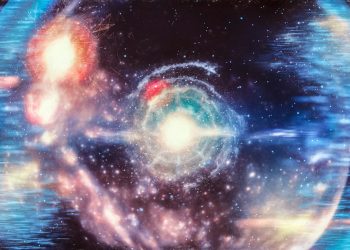The Berkeley Lab Laser Accelerator (BELLA) has detected and characterized directional muons. Credit: https://pxhere.com/es/photo/788784?utm_content=shareClip&utm_medium=referral&utm_source=pxhere
Muon beams can now be created in a device as long as a ruler.
Berkeley Lab researchers have demonstrated a compact 30 cm long laser-plasma accelerator (LPA) capable of generating and detecting highly directional muon beams. It works by using intense laser pulses to accelerate beams of electrons, which then create muons in much higher numbers and with greater directivity, providing a powerful new alternative for non-destructive imaging of large or concealed objects.
Conventional artificial muon sources are large and expensive, making many imaging applications dependent on natural, rare and unreliable cosmic rays. The new LPA overcomes these constraints by producing significantly higher muon yields, reducing exposure times from months to minutes, according to the study published in Accelerators and Physical Examination Beams.
Unlike X-rays, which are easily absorbed, muons gradually lose energy, allowing them to pass through large or hidden structures made of hundreds of meters of rock or dense materials like lead and steel. Using this exceptional penetrating power, muon imaging has revealed hidden chambers in the Great Pyramid of Giza, probed the interiors of volcanoes and inspected nuclear waste.

Schematic top view of the experimental setup (not to scale). Credit: Phys. Rev. Accel. Beams 28 (2025). DOI: https://doi.org/10.1103/kxjr-h7zs
Cosmic rays constantly flood the Earth with muons. About 147 muons pass through each square meter of surface every second, and billions pass through each of us during our lifetime. However, imaging applications require muons coming from specific directions. This is why traditional muon imaging requires months of exposure to collect enough data to get a clear picture.
The need for a compact device that could be transported on site led researchers to LPAs. Several studies had hypothesized that LPAs could potentially generate muons as a byproduct of the collision of laser plasma-generated electron beams with high-Z targets; Z here represents the atomic number of an element. Most of them were just computer predictions, without any experimental support.
At Berkeley Lab’s BELLA Facility, researchers achieved the first detection and characterization of directional muon beams produced by a laser-plasma accelerator (LPA). Using the laser, the researchers accelerated electrons to extremely high energies (multi-GeV) in a 30 cm plasma channel.
These high-energy electrons then collided with a high-Z target (lead), where they emitted photons as they were deflected by atomic nuclei. When these energetic photons hit the target nuclei, they produced muon-antimuon pairs. The resulting muons formed a highly directional collimated beam along the initial electron path, with energies reaching several GeV.

Muon flux behind the concrete wall calculated with Geant4 for a perfectly aligned beam. Credit: Phys. Rev. Accel. Beams 28 (2025). DOI: https://doi.org/10.1103/kxjr-h7zs
Simulations and experiments reveal two distinct populations of muons: high-energy directional muons concentrated along the central beam axis, and lower-energy non-directional muons dominating regions away from the central beam.
The LPA also generated muon fluxes more than 40 times those of cosmic rays for horizontal imaging. Instead of relying on the low flux of muons from cosmic sources, the system delivered more than 20 muons per shot into the imaging aperture, providing exceptional resolution at unprecedented speed.
The researchers note that the experiment establishes LPA-generated electron beams as practical sources of muons, paving the way for future applications built around high-energy beams and detectors optimized for muon scattering image reconstruction.
Written for you by our author Sanjukta Mondal, edited by Gaby Clark, and fact-checked and revised by Robert Egan, this article is the result of painstaking human work. We rely on readers like you to keep independent science journalism alive. If this reporting interests you, consider making a donation (especially monthly). You will get a without advertising account as a thank you.
More information:
Davide Terzani et al, Measurement of directional muon beams generated at the Berkeley Laboratory laser accelerator, Accelerators and Physical Examination Beams (2025). DOI: 10.1103/kxjr-h7zs
© 2025 Science X Network
Quote: Compact laser-plasma accelerator can generate muons on demand for imaging (October 14, 2025) retrieved October 15, 2025 from https://phys.org/news/2025-10-compact-laser-plasma-generate-muons.html
This document is subject to copyright. Except for fair use for private study or research purposes, no part may be reproduced without written permission. The content is provided for informational purposes only.









